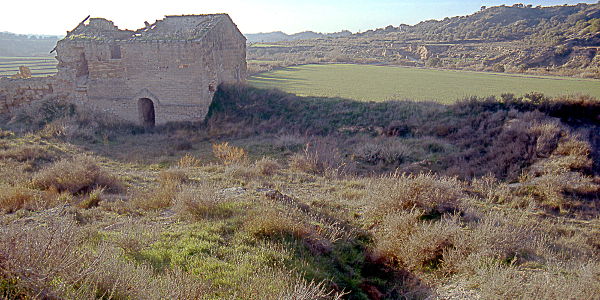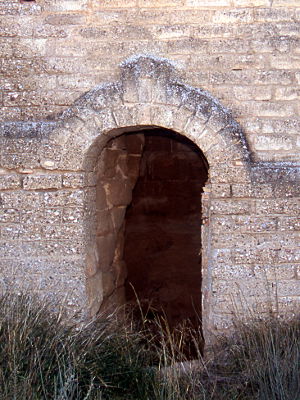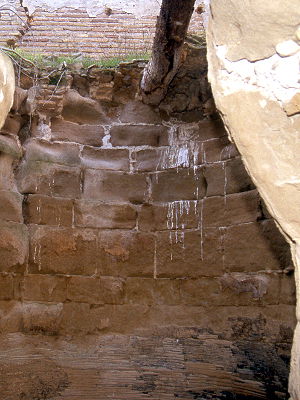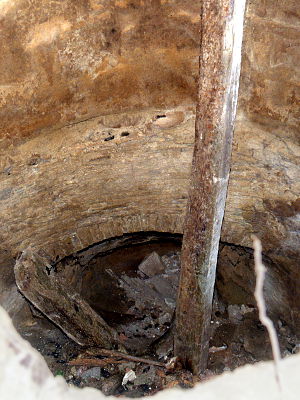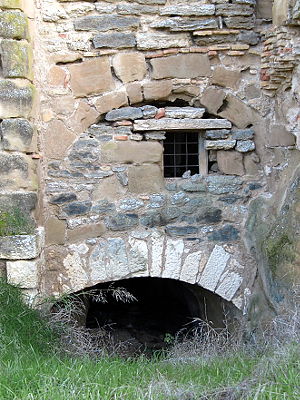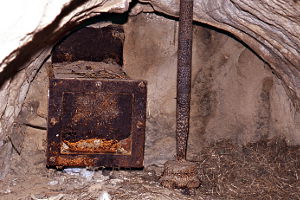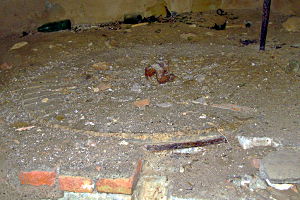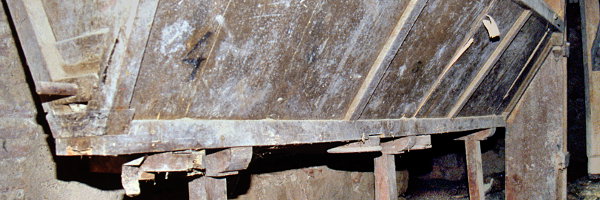Path: Introduction -
Visit the mills; catalogue - Almunia de San Juan: molino de la Ortilla

Mills in Altoaragón - harinero
Almunia de San Juan:
Almunia de San Juan:
molino de la Ortilla

Almunia de San Juan lies in Huesca province, in the Cinca Medio Region,
north east of Monzón. Coming from Monzón, or exit 44 of the A-22 (Monzón avda Almunia & Almunia de S. Juan),
You will arrive in the village at a roundabout. Turn right to Azanuy and then take the first road to the right (Calle San Juan).
There is a sign posted (hidden from where you come) showing the way to the sifón del Sosa. Follow the narrow and winding
road for about 2 km. At the end you will cross the river bed and find the construction of (1) at the other bank.
The mill, known as the Molino de la Ortilla, took its water from the Río Sosa.
Pictures: 28.XII.2012

